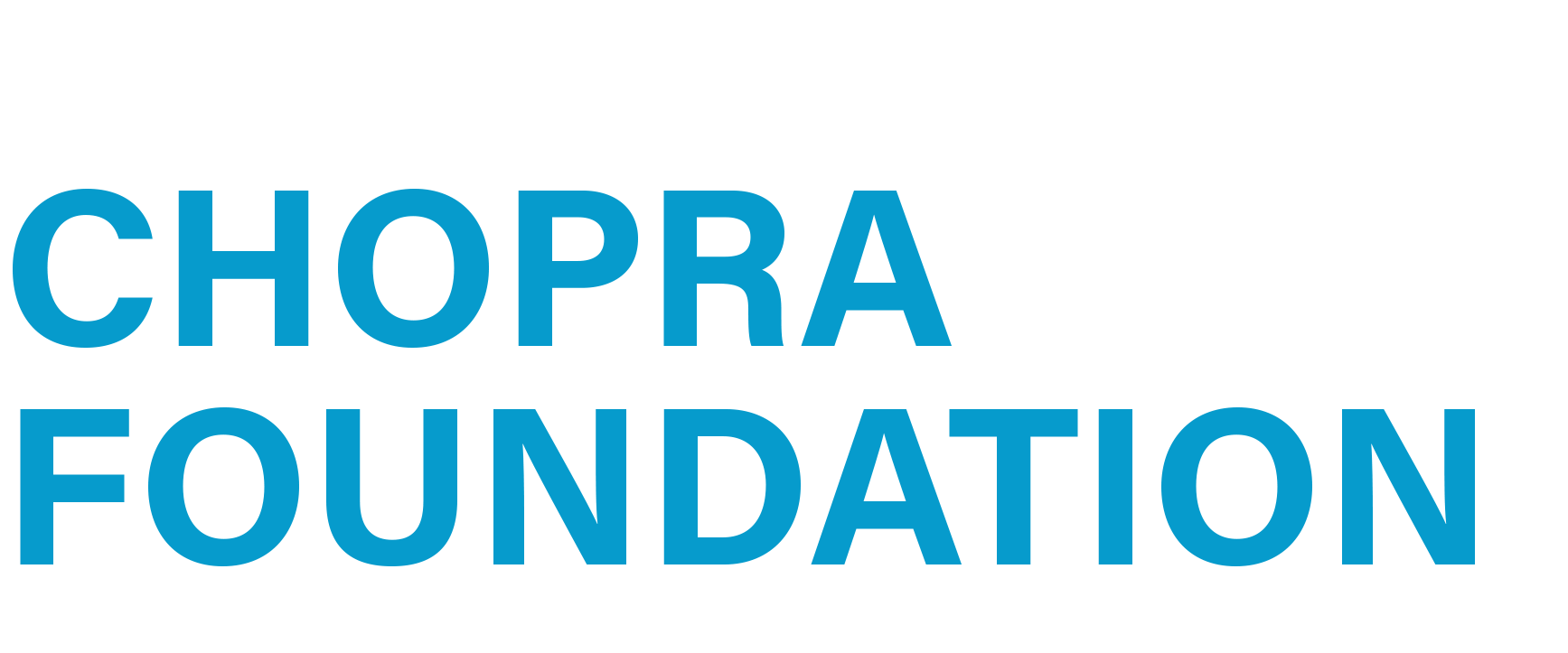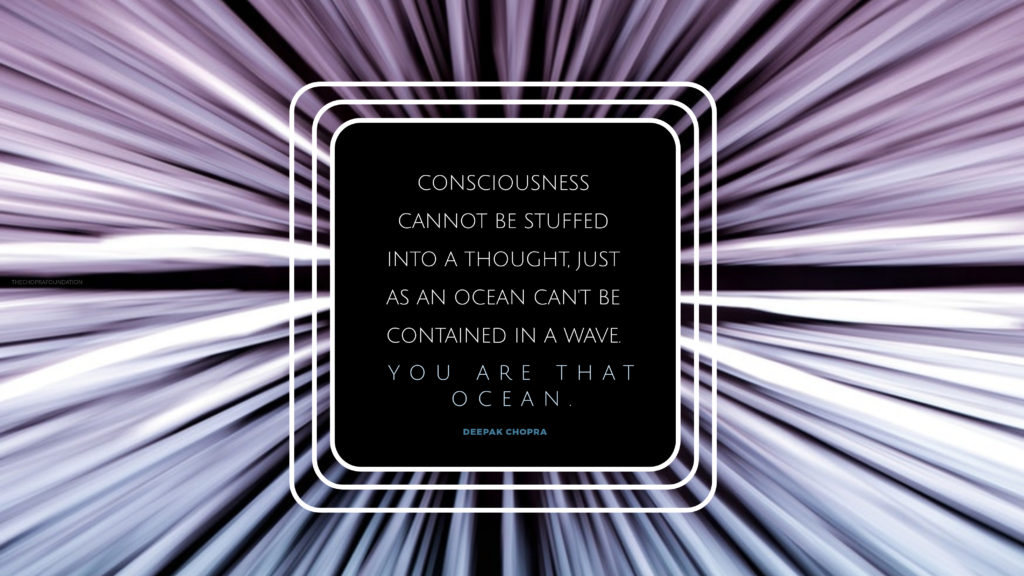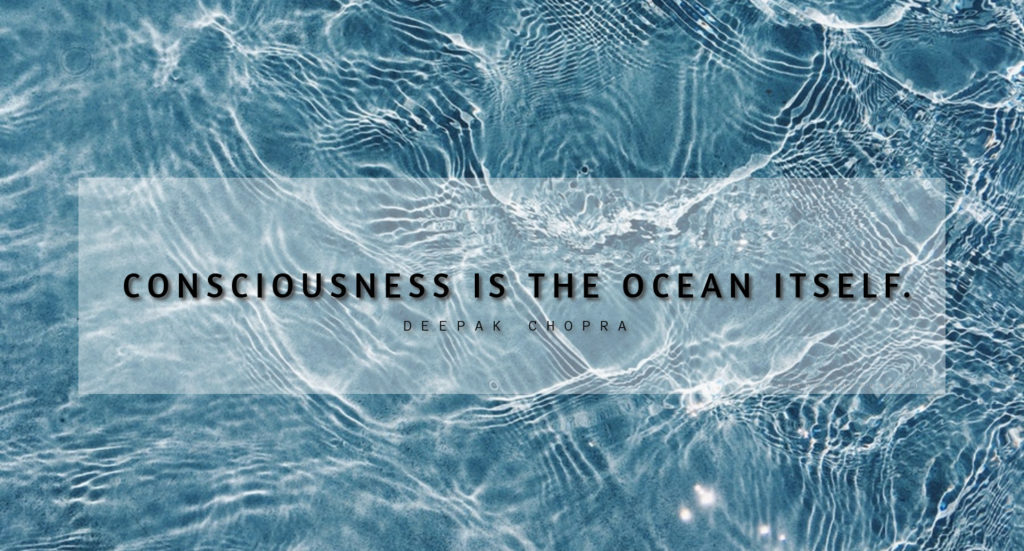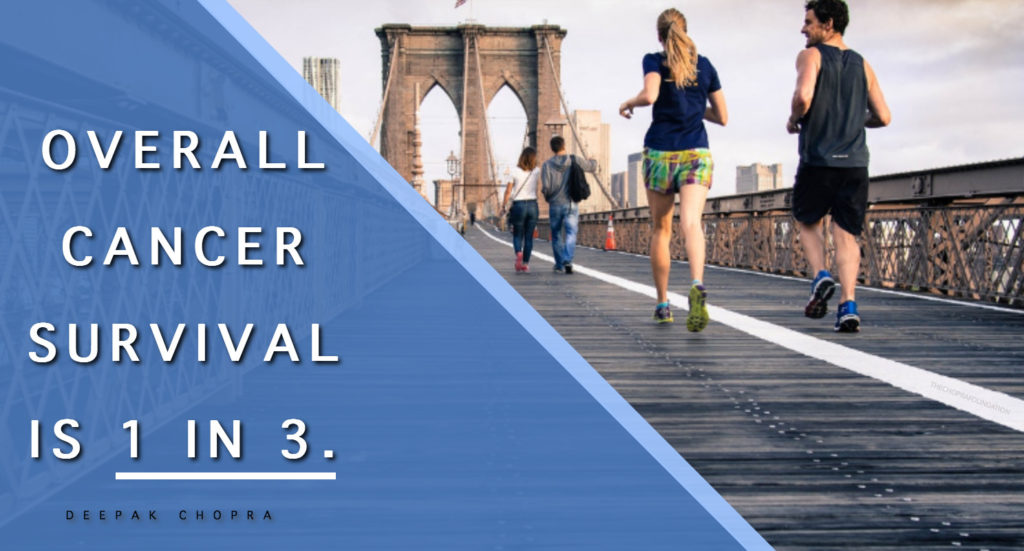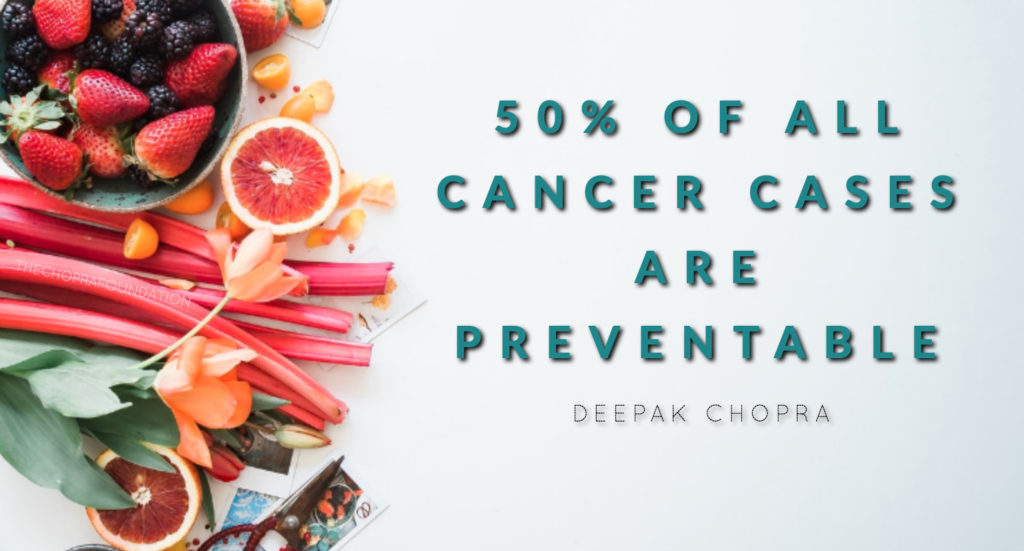Deepak Chopra, MD, Rudolph E. Tanzi, PhD and Paul J. Mills, PhD
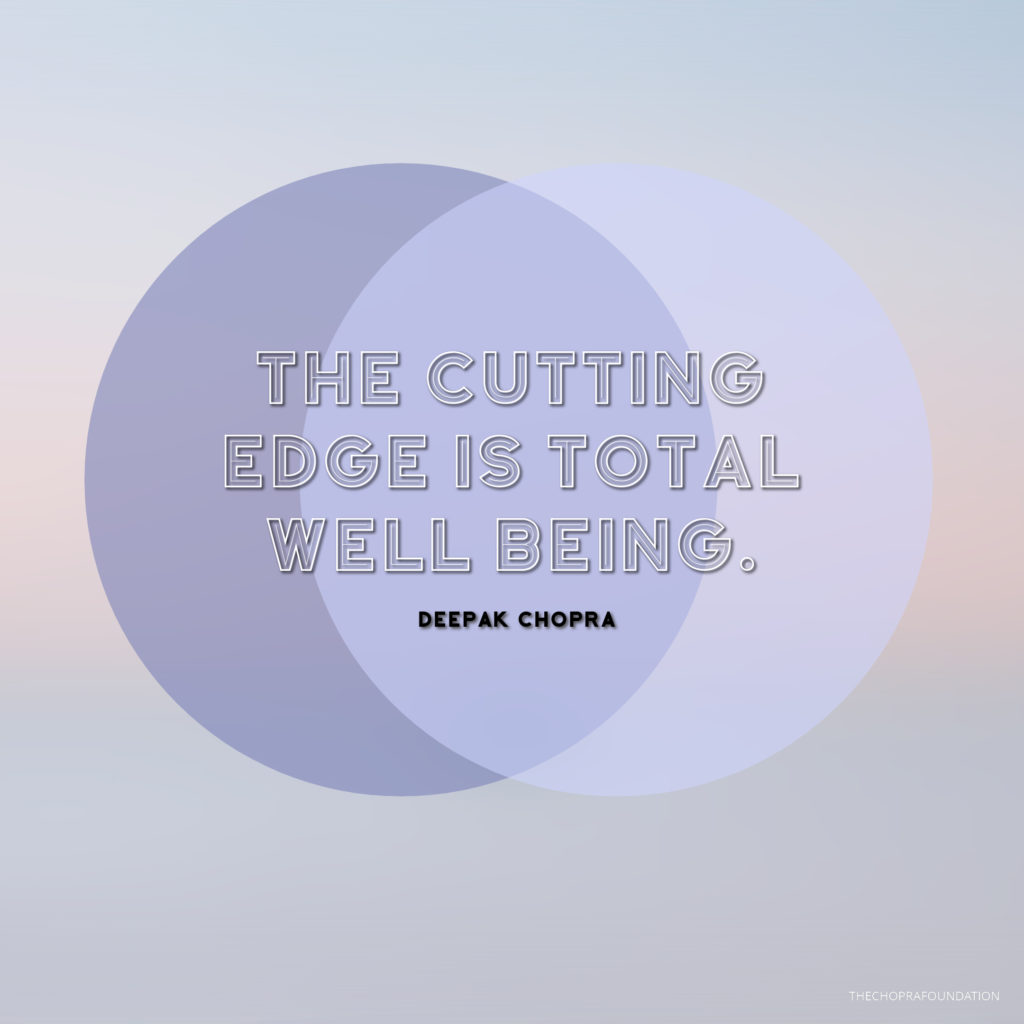
It is much easier to understand what makes people unhappy than to understand what makes them happy. Happiness is undermined or destroyed by violence, poverty, illness, and other external factors, leading to the inner states of depression, anxiety, and misery. Here, the link between inner and outer poses no mystery. It seems common-sensical that by reversing the causes of unhappiness, happiness will result.
But this is only partially true. Happiness, the sense of general wellbeing, isn’t the same as removing a rock from your shoe. You have to lay a foundation upon which wellbeing can be built. In modern terms, this foundation is known as a positive lifestyle, and by now the elements of such a lifestyle have been well documented. The primary ingredients are:
· Good sleep
· Stress management
· Movement and exercise
· Emotional balance
· Proper nutrition
It would make things simple if these alone were enough to make each person gain a sense of wellbeing, but they aren’t. There must also be a sense of satisfaction with one’s life. The Gallup Organization, which devotes itself to measuring wellbeing worldwide, uses five measures that broadly define wellbeing.
· Career
· Social
· Financial
· Physical
· Community
This makes the picture more complete, but suddenly happiness begins to look like a social science project rather than a living, day-to-day process. Dissecting wellbeing into various
components provides a map, not the actual territory. Philosophers both East and West have pondered the elusiveness of human happiness, including the perverse ways we defeat ourselves by doing the very things, like wage war, that we know will cause deep misery and pain.
Two broad paths to wellbeing were outlined, and they hold good today as much as they did in ancient India or Greece. One path is to maximize pleasurable experience and minimize painful ones. The Greeks called this the hedonic path, which is more than vague hedonism. The hedonic path is utilitarian at bottom; it is based on the calculation that a person will be happy if he has more pleasure in his life than pain. One might also call this the “input-output” model of wellbeing. Provide enough positive input, decrease the negative input, and the output will be happiness.
But once again human nature doesn’t comply so simply. The missing ingredient is our perception and interpretation of experience. The existence of sad rich people isn’t mythical—even in the midst of plenty, with the resources to keep painful experiences at bay, it’s possible to feel unhappy. Adding more pleasure won’t lead to a cure when pain is an inner perception.
The answer might lie, then, with the second path, which the Greeks called eudaimonic. The term has no English equivalent, but “inner fulfillment” will do. In the West this path is identified with Aristotle, who concluded that a virtuous life was the key to wellbeing. “Virtue” isn’t a potent word anymore, and probably not a happy one—it brings up images of cold piety and rectitude. Beyond this, modern life encourages hedonism in the form of mass consumerism and equating a good time with a good life. Only gradually has the second path, going inward to find happiness, found any kind of strong advocacy.
The turning point came in the past few decades with the beginnings of a workable mind-body approach to everyday life and the possibility of making happiness holistic. From a holistic viewpoint, there aren’t two paths but one, and this one is all-embracing. In ancient India the holistic path depended upon a term some Westerners now recognize: Sat Chit Ananda. The simplest translation is “eternal bliss consciousness,” which describes the essence of two domains of human existence, inner and outer. When we go inward and return to our source in pure consciousness, we encounter a state of bliss that is unshakable, eternal, and immune to change.
From the same source we derive all our perceptions and interpretations of the outer world; therefore, eternal bliss consciousness is the foundation of both halves of reality, unifying them into one whole.
It’s no surprise that translating such a heady concept into Western terms and then making it accessible in everyday life took a very long time. Sat Chit Ananda sounds like abstract, esoteric metaphysics. To make it concrete, it had to pass the mind-body test. That is, there had to be proof that going inward—through meditation, contemplation, self-inquiry, and self-reflection—actually made people happier and healthier. Starting in the Seventies, the edge of the wedge were basic studies showing that meditation “works,” that is procures beneficial brain changes and improves physical impairments like high blood pressure.
Jump ahead forty years and you find that hundreds of studies have built upon those basic findings. The validity of the inward path, as translated into Western terms, has gained a foothold. But to be holistic, the inward path must pass a much higher hurdle, proving itself absolutely vital and important—otherwise, meditation will remain just another item to choose from the positive lifestyle menu. Millions of people, especially if they have the necessaries of a comfortable physical existence, feel healthy and happy without ever going inward. The general lot in life of someone in ancient India was rife with disease, war, poverty, and the buffeting of natural forces. Happiness was a pressing issue because it was so hard to attain and hold on to.
That’s no longer true, for the most part, in the developed world, but with rampant levels of depression and anxiety still present, leading to billions of dollars spent annually on drugs to counter (but not heal) these disorders, suffering poses as great a problem as how to increase the wellbeing that people already feel. The next stage in proving the worth of the inward path involves a multi-dimensional approach, which is now being seen in some quarters where the goal is total wellbeing. The term may sound grandiose, but in fact holistic approaches are required to deliver total wellbeing; the alternative, partial wellbeing, is already with us. As a pilot program in this direction, the Chopra Foundation recently completed a research study, the Self-Directed Biological Transformation Initiative (SBTI), that examined the health and wellbeing effects of traditional Ayurvedic practices, which included:
· Group meditation and yoga
· Massage
· Diet
· Adaptogenic herbs
· Lectures
· Self-inquiry
Ancient forms of medicine, such as Ayurveda, were developed with the understanding that cultivating a deeper awareness of Self and the embodied Self’s connection with its environment are key to fostering health and wellbeing. Findings from the SBTI study indicate that the Ayurvedic practices led to increases in wellbeing as assessed by measures of:
· Spirituality
· Gratitude
· Self-compassion
· Sense of non-dual awareness
The SBTI study also found that these practices help decrease:
· Blood levels of metabolites associated with inflammation
· Cardiovascular disease risk
· Cholesterol regulation
Much remains to be studied, and we will continue to publish findings from the SBTI study, all future findings will be made available on The Chopra Foundation. But people want practical guidance too. Last year the Chopra Center for Wellbeing and the wellbeing platform Jiyo, in a collaboration with the University of California (UC), launched a free media channel, the UCTV Wellbeing Channel. It has a significant amount of content relevant to supporting your personal wellbeing.
Prevention has been with us for decades; positive lifestyle programs are now widely publicized and appreciated for their capacity to improve health by a variety of mechanisms including decreasing inflammation. The cutting edge is total wellbeing. That’s where the promise of aholistic approach will be fulfilled. Progress depends on a host of doctors, scientists, public health outlets, and media coverage. Ultimately, however, everything depends upon individuals who grasp the concept and begin to live it, a prime example of becoming the change you want to see in the world.
Deepak Chopra MD, FACP, founder of The Chopra Foundation and co-founder of The Chopra Center for Wellbeing and Jiyo.com, is a world-renowned pioneer in integrative medicine and personal transformation, and is Board Certified in Internal Medicine, Endocrinology and Metabolism. He is a Fellow of the American College of Physicians, member of the American Association of Clinical Endocrinologists and Clinical Professor at UCSD School of Medicine. Chopra is the author of more than 85 books translated into over 43 languages, including numerous New York Times bestsellers along with You Are the Universe (February 2017, Harmony) co-written with leading physicist, Menas Kafatos. Other recent books include Super Genes co-authored with Rudolph E. Tanzi, Ph.D. and Quantum Healing (Revised and Updated): Exploring the Frontiers of Mind/Body Medicine. www.deepakchopra.com
Paul J. Mills, PhD, Professor of Family Medicine and Public Health and Director of the Center of Excellence for Research and Training in Integrative Health at the University of California, San Diego. He is Principal Investigator of the Self-Directed Biological Transformation Initiative, a randomized trial that is examining the psychosocial and biological effects of whole-systems medicine approaches to wellbeing.
Rudolph E. Tanzi, Ph.D. is the Joseph P. and Rose F. Kennedy Professor of Neurology at Harvard University and Vice Chair of Neurology at Mass. General Hospital. Dr. Tanzi is the co-author with Deepak Chopra of the New York Times bestseller, Super Brain, and an internationally acclaimed expert on Alzheimer disease. He was included in TIME Magazine’s “TIME 100 Most Influential People in the World”.
